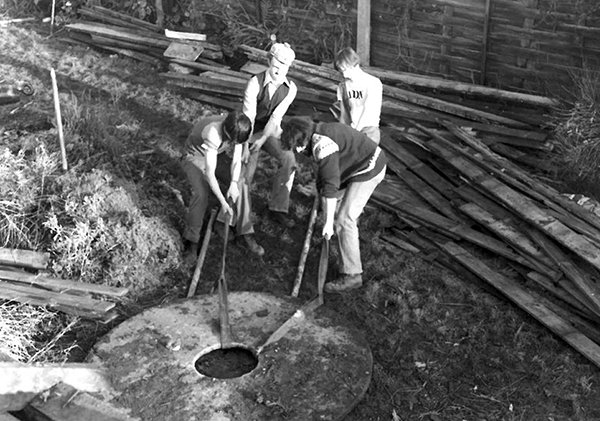A Working Victorian Blacksmith’s Forge
The Garston Forge traces its origins back to the 1850s when it was initially constructed in the rear garden of a house in Garston, Hertfordshire.
From the 1860s until 1926, it was diligently operated by members of the Martin family, whose descendants maintain connections with the Museum to this day
A unique feature of the forge lies in its incorporation of a wide variety of materials, reflecting the craftsmanship and resourcefulness characteristic of structures from that era. The forge, now safeguarded within the Museum, stands as a tangible testament to the enduring legacy of the Martin family and the industrial heritage of Garston.
Watch Our Blacksmith at Work
Visitors to the museum can witness the craftsmanship of our volunteer blacksmiths, who can often be found working diligently in the forge. For those eager to experience the art of blacksmithing themselves, special experience days are available. Additionally, hand-forged products crafted in the forge are offered for sale in the Museum shop, providing a unique and authentic connection to the heritage of blacksmithing.
How was Garston Forge Rebuilt at the Museum?
To recreate the original yard environment, the Museum has erected a brick and flint wall outside the forge, mirroring the typical walls found in the Chiltern area. This construction technique, combining freely available flints with bricks, adds a decorative touch.
Adjacent to Garston Forge stands a circular cast-iron platform, a historical artifact utilized for fitting metal tyres onto wooden wagon and cart wheels. The forge's hearth, originating from Naphill, aligns seamlessly with the original foundations and date. The bellows, a crucial component of the forge, were sourced from Leavesden Hospital.
Constructed around 1860 in Garston, near Watford, the forge holds a rich history. For over six decades, from the early 1860s until 1926, it served as the workspace for members of the Martin family, who practiced their trade within its walls.
Following its tenure as a forge, the building transitioned into storage use until the site's sale for development in 1982. The forge fell into bad disrepair, and permission had been given for its demolition. At that point, recognising its historical value, the building was generously donated to the Museum.
When was Garston Forge Built?
What Materials is Garston Forge Made From?
The Garston Forge boasts a meticulous construction that upholds historical authenticity and functionality. The slate roof, likely sourced from North Wales and transported by canal, not only reflects its origin through its color but also features Victorian-era clay ridge tiles with decorative points, enhancing the forge's aesthetic appeal.
Functionality is woven into the forge's design, evident in the floor's thoughtful composition. Timber baulks create a non-slip surface for horses in the shoeing area, while bricks form the doorstep. Around the hearth, a durable, fire-resistant stone floor enhances the working surface. The forge's unique elements contribute to its authenticity, providing visitors with a tangible connection to historical craftsmanship.
Materials such as 7,200 bricks from J. Chapman at Bucknalls Lane, Garston, and 28 ridge tiles, along with a cast-iron tyring ring for wheel maintenance, exemplify the forge's attention to detail.
The hearth itself, crafted with blue engineering bricks, features spaces for fuel beneath, with a Tue iron facilitating air channelling from the leather bellows. Wood elements, including 16 sleepers and a sturdy bench supporting the vice, highlight the forge's practical considerations for both equine and blacksmithing activities.
Metal components, such as the cast iron tyring ring outside the door, anvils, and a quenching trough, underscore the forge's industrial functionality.
Together, these chosen materials and elements contribute to the Garston Forge's unique charm and provide an immersive experience for visitors exploring the rich heritage of blacksmithing.





